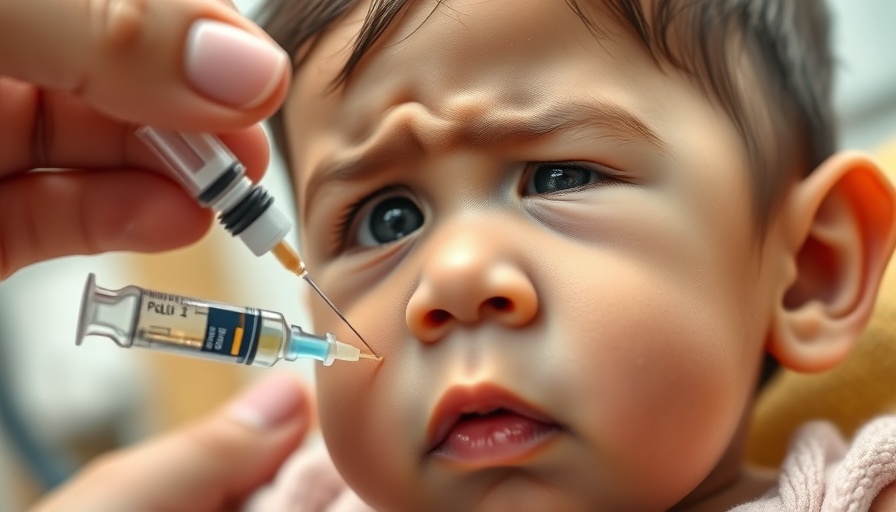
The Triumphs and Trials of Polio Eradication
The near-eradication of polio, a disease once feared worldwide, was hailed as a monumental public health achievement. For decades, the global effort to eradicate this infectious disease showcased the power of vaccines and the world’s commitment to health. However, factors such as misinformation, political resistance, and inadequate logistics are threatening to reverse these hard-earned gains. As the narrative of polio shifts from eradication to resurgence, it's vital to explore the intricate tapestry of political, social, and logistical factors leading to this predicament.
Understanding the Relentless Resilience of Polio
Polio, caused by the poliovirus, primarily targets children under five years old and can lead to permanent paralysis or even death. While significant strides have been made, the virus remains endemic in Afghanistan and Pakistan. An alarming spike in infections in recent years has drawn attention to the underlying issues that face ongoing eradication efforts. Despite logistic setbacks and misinformation, the Global Polio Eradication Initiative (GPEI) provides a template of collaboration, combining resources from numerous countries and organizations.
Challenges on the Ground: A Closer Look at Vaccine Delivery
Health workers like Sughra Ayaz represent the frontline in the battle against polio. However, their efforts are often hampered by public suspicion and distrust. Mismanagement occurs at various levels, from improperly storing vaccines to marking children as vaccinated without actual inoculation. Tensions were already high in regions fraught with socio-political instability, making the work of health personnel both challenging and dangerous. The consequences of these actions are stark; as Ayaz states, “In many places, our work is not done with honesty.”
The Weight of Misinformation: Perception vs. Reality
The spread of false narratives concerning vaccines has amplified public hesitance. In some areas, families are prioritizing immediate needs such as food and water over vaccinations, raising serious concerns about child health and safety. Confusion feeds into conspiracy theories, with accusations that vaccines are linked to sterilization. Heightening this situation are cultural and religious factors that further complicate the delivery of health services. It’s a vital reminder of the influence of societal beliefs on public health initiatives.
Global Lessons: The Need for Unity Against Misinformation
Looking at polio eradication efforts provides foundational lessons applicable to other global health challenges. Effective communication strategies that engage local communities are essential. Programs must address and dispel myths while prioritizing the transparent sharing of information. The vaccinator’s perspective emphasizes that grassroots educational initiatives must target fearful parents directly, redefining the narrative surrounding vaccines through science-based dialogues.
A Historical Perspective: Charting Progress and Regress
The eradication campaign began in 1988, and since then, we have witnessed flickering moments of success amidst daunting challenges. The last confirmed case of the natural poliovirus in the Americas occurred in 1991; today, though, polio is returning in places where eradication seemed imminent. Sudden surges in polio cases post-2021 underline the need for sustained community engagement, relentless pursuit of vaccination goals, and urgent political will. Understanding historical lessons is fundamental to addressing the current crisis.
Local Strategies with Global Applications
In light of the recent resurgence of polio, local strategies must be tailored to reflect specific community contexts while also fitting into the larger global health narrative. Innovative approaches such as mobile vaccination units or community health workers can enhance accessibility, ensuring the most vulnerable populations receive the care they need. Critical analysis and adaptation of these localized strategies can pave the way for broader public health triumphs.
The Future of Polio Eradication: A Call to Action
As the fight against polio rekindles, it also poses questions about the future of vaccination efforts globally. The challenge presented requires unified action, where health organizations, governments, and communities work cohesively. Drawing from past experiences, commitment to transparent and truthful information-sharing must remain paramount in combating the disease and fostering trust with those at risk.
Conclusion: Why an Informed Community is Essential
Polio's comeback serves as a stark reminder of vulnerability within public health achievements. The concerted effort to eradicate polio necessitates a return to foundational principles of healthcare: education, engagement, and accessibility. It's time for communities to rally, make informed decisions, and advocate for health initiatives that prioritize children’s future. The road ahead is challenging, but with unity and determination, it can lead to a future free from polio.
 Add Row
Add Row  Add
Add 




Write A Comment